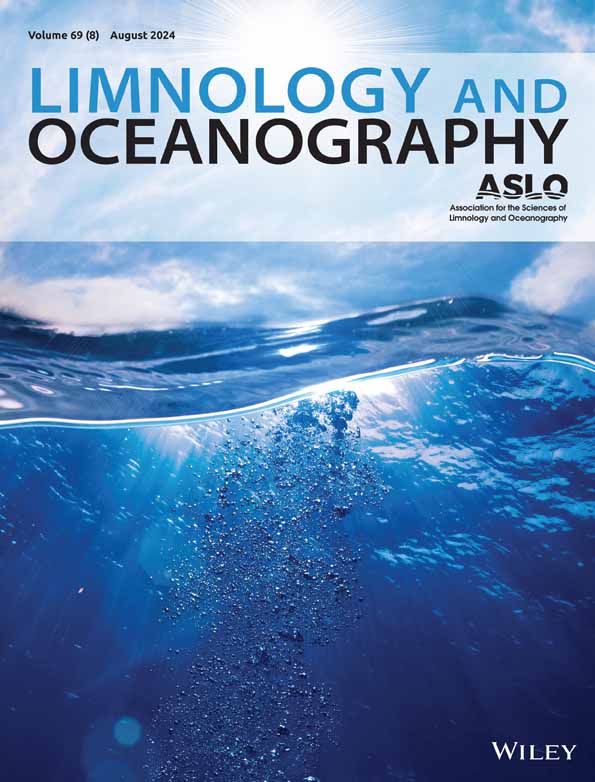Daily temperature variation explains zooplankton community differences in freshwater mesocosms recovering from a natural drought
IF 3.7
1区 地球科学
Q1 LIMNOLOGY
引用次数: 0
Abstract
Drought events are typically studied as a single stressor. However, multiple environmental variables are altered under drought conditions, including water level and daily temperature variation. Here, we experimentally manipulated both variables in 16 outdoor mesocosms to disentangle how they impact freshwater zooplankton communities. During a natural drought in summer 2022, we maintained water level in eight mesocosms while allowing eight to almost dry out. We reduced daily temperature variation using insulation in half of these outdoor mesocosms to give a fully factorial design with four replicates for each of the four treatments:每日温度变化解释了淡水中生态系统从自然干旱中恢复的浮游动物群落差异
干旱事件通常作为单一压力源进行研究。然而,在干旱条件下,多种环境变量发生了变化,包括水位和日温度变化。在这里,我们实验地在16个室外中生态系统中操纵这两个变量,以解开它们如何影响淡水浮游动物群落。在2022年夏季的自然干旱期间,我们维持了8个中型生态系统的水位,同时让8个生态系统几乎干涸。我们在一半的室外中生态系统中使用隔热材料减少了每天的温度变化,从而给出了一个全因子设计,在4个处理中每个处理4个重复:对照、低水位、隔热、隔热+低水位。我们发现,在150天的研究期间,低水位的影响是持久的;尽管自然降水将低水位处理恢复到与对照组相似的深度,但群落恢复不完全。然而,我们的研究结果一致表明,在解释干旱效应方面,日温度变化比水深更重要,日温度变化的放大与浮游动物群落结构的初始分化和净生物量的减少密切相关。由于小型室外中生态系统的日温度变化可能比较大的天然淡水要大,我们建议在设计中生态系统实验时考虑到这一点。从多重压力源的角度来看,我们的研究结果表明,在构建淡水无脊椎动物群落时,温度变化可能比水位更重要。
本文章由计算机程序翻译,如有差异,请以英文原文为准。
求助全文
约1分钟内获得全文
求助全文
来源期刊

Limnology and Oceanography
地学-海洋学
CiteScore
8.80
自引率
6.70%
发文量
254
审稿时长
3 months
期刊介绍:
Limnology and Oceanography (L&O; print ISSN 0024-3590, online ISSN 1939-5590) publishes original articles, including scholarly reviews, about all aspects of limnology and oceanography. The journal''s unifying theme is the understanding of aquatic systems. Submissions are judged on the originality of their data, interpretations, and ideas, and on the degree to which they can be generalized beyond the particular aquatic system examined. Laboratory and modeling studies must demonstrate relevance to field environments; typically this means that they are bolstered by substantial "real-world" data. Few purely theoretical or purely empirical papers are accepted for review.
 求助内容:
求助内容: 应助结果提醒方式:
应助结果提醒方式:


